Most children love to play with bubbles. They're just fascinating, whatever age you are. We love to spot the shimmering colours of the rainbow and marvel at the sphere shape.
Giant bubbles are extra special. Both kids and adults will be amazed at how big they can be!
The best thing about making giant bubbles is you don't need any special equipment, just an extra strong bubble mix and some rope or a hula hoop!
The best giant bubble mixture
I tried the bubbles using an ordinary bubble mixture, which didn't work, so I turned to Red Ted Art for help. We followed Red Ted Art's bubble recipe, and it worked perfectly.
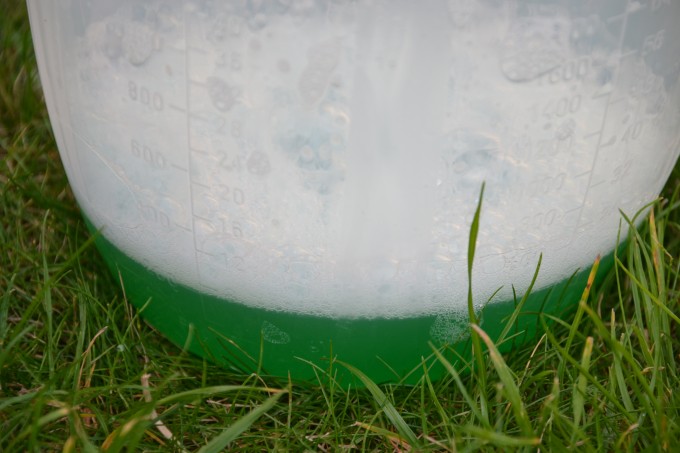
We made our bubble wands using string and straws. This photo shows our mini version. The idea is to hold the straws, not the string!
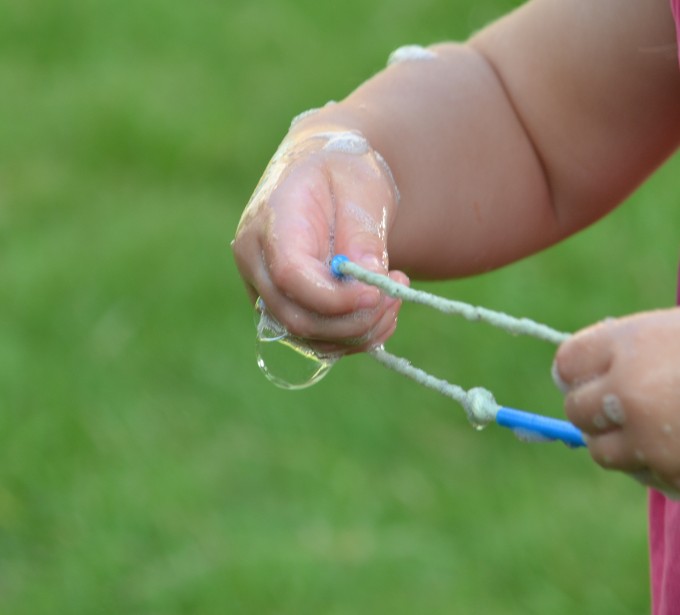
The big version made these giant bubbles!
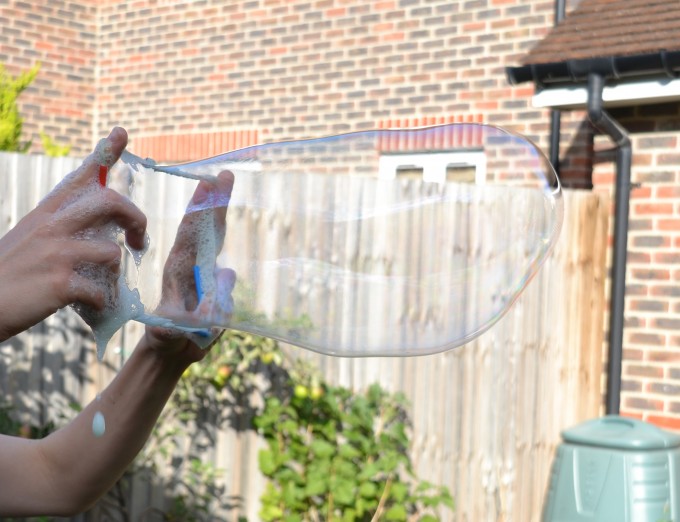
We even used a tube to make a bubble pipe. I didn't think this would work, but it was fantastic. We used the inside of a roll of wrapping paper, so it was quite a long tube and made a satisfying noise as the bubble popped out. A plastic tube would work better as the cardboard got a bit damp.
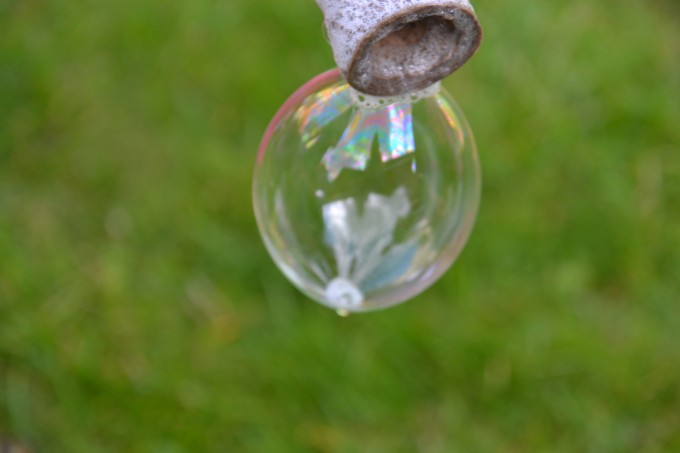
How to make giant bubbles
Try using a hula hoop as a giant bubble wand. We used a tuff spot to stand in. You can see how our bubble is bending because of the wind, so it's best to try this on a still day. As a safety precaution, I'd also recommend wearing safety goggles in case the bubble pops in little eyes.
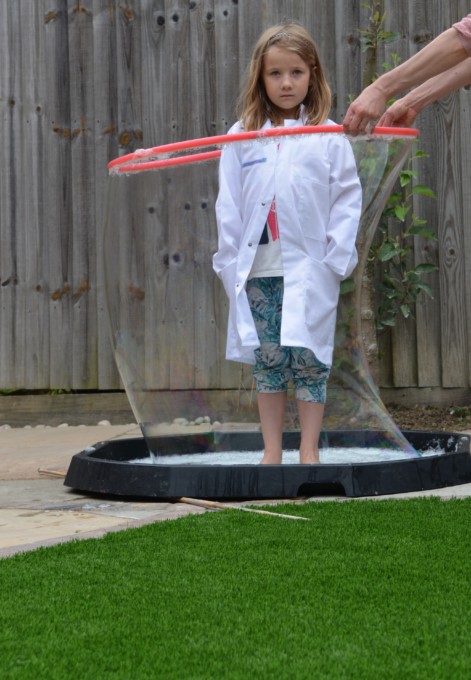
Questions to ask for a bubble investigation
Can you see the rainbow effect on the bubbles?
This is because light from the sun contains a range of colours, all with different wavelengths that form white light together.
These colours are:
Red, Orange, Yellow, Green, Blue, Indigo and Violet
When the white light shines through the film of the bubble, it is reflected and dispersed, splitting white light into different wavelengths revealing all seven colours.
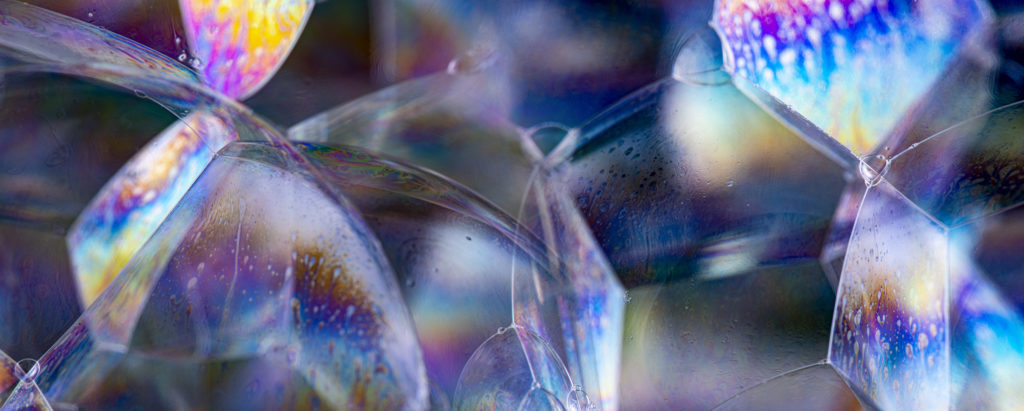
Is it easier to blow big bubbles or small bubbles?
Do you think the film of soapy bubble water is more likely to break the bigger it is and the more it stretches?
Why are bubbles always round?
Bubbles consist of a thin film of soapy water filled with air. When you blow a bubble, the film expands outward. The forces acting between the molecules of the bubble cause it to form the shape that encloses the most volume with the least surface area — a sphere. That is why whatever shape you use for a bubble wand doesn't change the end shape of the bubble.
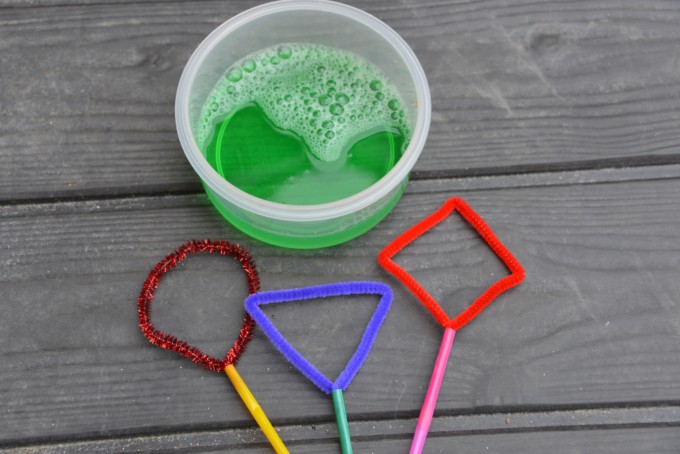
More bubble experiments for kids
Create your very own bubble mixture. Experiment with different amounts of water, washing up liquid ( dish soap ) and glycerine until you get the perfect recipe, then try adding a little cornflour to make it even stronger!
Try to make a square bubble. You'll need to make a little frame for this, but the result is impressive.

Another fun bubble experiment is making a lava lamp
We also love our extra special bubble snake!
Contains affiliate links
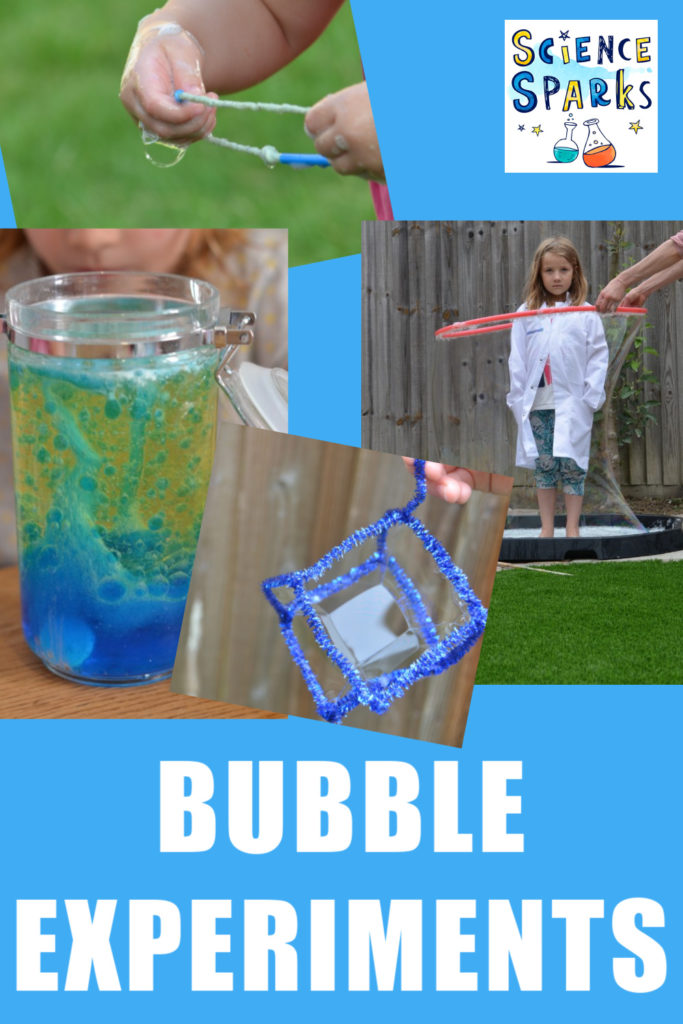
Last Updated on September 20, 2023 by Emma Vanstone

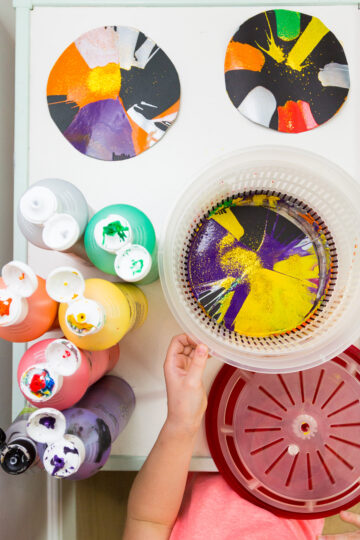
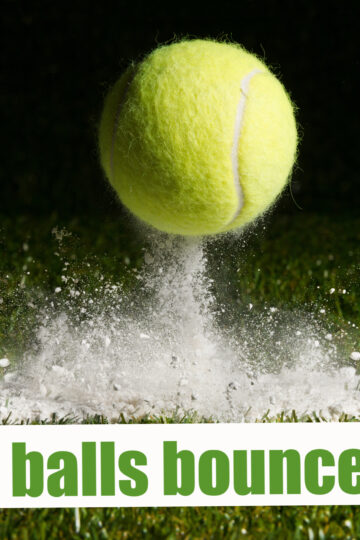
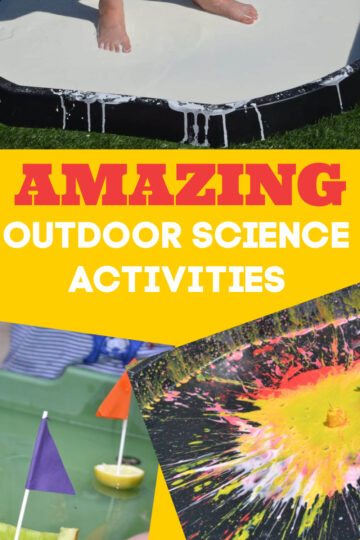
Lynda says
We love giant bubbles! Have you also tried joining lots of drinking straws together with a rubber band, dipping all the ends in and blowing through to get loads of little bubbles? My 3 year-old likes this one as it's easier for her to get bubbles by blowing through the straws than with a normal bubble wand.
Can't take the credit for the idea - I pinned it from http://lessonslearntjournal.com/do-it-yourself-bubble-shooter/
becky says
I am going to have a go at this my washing up liquid attempt was a bit pants!
Anna@The Measured Mom says
Love the science and fun mix! Thanks so much for sharing at the After School Linky.
ScienceSparks says
Glad you like it, thanks Anna x
Tired Mummy of Two says
I have been meaning to do this all summer holidays. We had a great set that we bought last year. It was just two bamboo sticks and some string with the bubble mixture!
I will make our own again and you have inspired me to do it soon